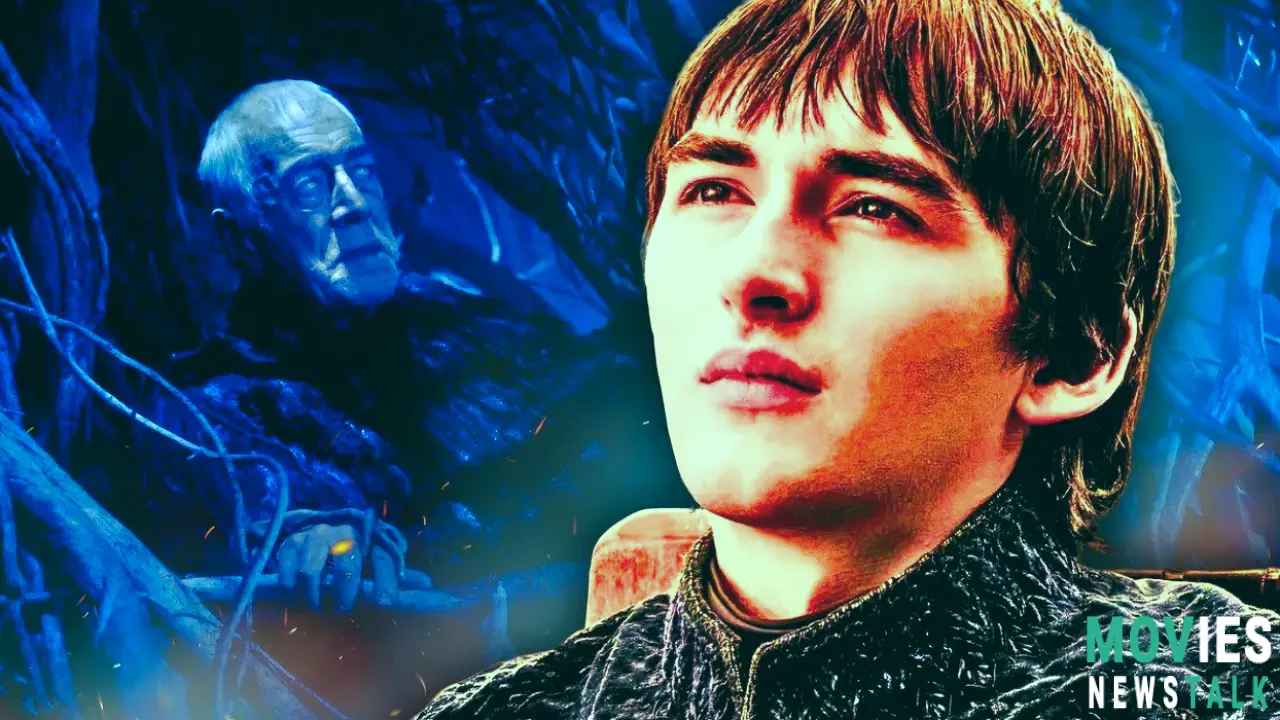The Three-Eyed Raven: Exposing Brynden Rivers' True Identity in "House of the Dragon"
A key character in the "Game of Thrones" saga, the Three-Eyed Raven has remained enigmatic throughout the entire show. Until the 'House of the Dragon' season 2 finale eventually revealed the truth and validated a long-standing fan idea, his identity remained a fascinating mystery to viewers. In addition to adding to the rich history of Westeros, this discovery reveals the complex relationships that exist between the Targaryen dynasty, the White Walkers, and the Greenseer clan's old dominance.
A long-standing belief that the Three-Eyed Raven was none other than Brynden Rivers, better known as Bloodraven, was based on George R.R. Martin's "A Song of Ice and Fire" novels. A character named Brynden, who makes reference to having been both a man of the Night's Watch and a crow, is one among the many hints found in the books that support this theory. In a vision of Daemon Targaryen, a person resembling Brynden—who has a crimson birthmark—sits entwined with a weirwood tree, a symbol of the Three-Eyed Raven. The 'House of the Dragon' season 2 finale conclusively validates this notion. This confirmation links the stories of "Game of Thrones" and "House of the Dragon," giving the character a deeper level of nuance.
Bloodraven's Journey: Three-Eyed Raven from Targaryen Bastard
Brynden Rivers, the bastard son of King Aegon IV Targaryen, was known as "Bloodraven" from birth because of a distinctive mark that resembled a raven on his cheek. He held the positions of Lord Commander of the Night's Watch, Master of Whisperers, and Hand of the King. In the end, his allegiance to House Targaryen brought him to the Wall, where he disappeared. Many theories surrounding Bloodraven's disappearance said that he turned into the formidable Greenseer known as the Three-Eyed Raven, who had the ability to see into the future and communicate with the old weirwood trees. The fact that Bloodraven carried Dark Sister, the Valyrian steel sword—a noteworthy relic that Daemon Targaryen would eventually acquire in "House of the Dragon"—lent credence to this notion.
The visual revelation of Bloodraven's identity as the Three-Eyed Raven in the 'House of the Dragon' finale establishes a clear connection between the character's disappearance beyond the Wall and his metamorphosis into a formidable Greenseer. This information supports the theory that Bloodraven eventually adopted the role of the Three-Eyed Raven because of his distinct Targaryen ancestry and his link to the weirwoods' old power. This relationship gives his persona and his place in the greater scheme of Westerosi history an additional degree of intrigue.
The Targaryen Association: An Ice and Fire Prophecy
The discovery that Bloodraven, a Targaryen, became the Three-Eyed Raven gives Aegon the Conqueror's fantasy of ice and fire an intriguing new meaning. This dream predicted the arrival of the White Walkers as a threat and the necessity of a Targaryen on the Iron Throne to bring the kingdom together and vanquish them. The fact that Bloodraven, a Targaryen with Greenseer abilities, evolved into the Three-Eyed Raven shows a stronger link between the Targaryen ancestry and the ancient Greenseer powers. This link implies that the Targaryens were destined to be key players in the fight against the White Walkers due to their dragon ancestry and innate knowledge of the old power.
Further connecting the Targaryens' fate with Westeros' is the revelation of Bloodraven as the Three-Eyed Raven. It calls into question how much Bloodraven knew about Aegon's dream and how that knowledge might have impacted his transformation into the Three-Eyed Raven. He might have had access to this important prophecy due to his extensive knowledge base and possible ties to antiquated magic. The Targaryen dynasty's place in the larger story of Westeros is more complicated and intriguing by this relationship between "House of the Dragon" and "Game of Thrones."
The Greenseer Powers: An Age-Old Magic Power
A formidable Greenseer, the Three-Eyed Raven can see past time and establish a connection with the old weirwood trees. They may interact with previous generations, access ancient information, and change the course of events because to this connection. The fact that Bloodraven changed into the Three-Eyed Raven emphasizes the significance of the Greenseer skills in the struggle against the White Walkers. With its roots in the weirwoods' magic, this age-old power is a formidable opponent to the darkness.
Bloodraven and subsequently Bran Stark have shown how the Greenseer powers may be a useful tool for navigating the present, understanding the past, and influencing the future. The capacity to see through time offers a singular viewpoint on the forces that have shaped Westeros and the cyclical cycle of events. The Greenseers play a crucial role in the fight against the White Walkers and the defense of Westeros because of this talent and their link to the old weirwoods.
Revealing the History of the Night King: A Relationship with the Three-Eyed Raven
Bloodraven's transformation into the Three-Eyed Raven illuminates the long-standing bond between the White Walkers and the Greenseers. Three-Eyed Raven was the Night King's real antagonist, as "Game of Thrones" proved. Bloodraven's transformation into the Three-Eyed Raven foreshadows a battle that Aegon the Conqueror's dream predicted would eventually break out between the Targaryens and the White Walkers. Given their dragon ancestry and affinity for old magic, this link supports the theory that the Targaryens would be essential to the fight against the White Walkers.
The relationship between the Night King and the Three-Eyed Raven emphasizes the duality of power and the ongoing conflict between good and evil. With their link to the weirwoods and their time-traveling abilities, the Greenseers are a force of old magic that can stand up to the evil that the Night King and the White Walkers symbolize. The conflict between the Night King and the Greenseers symbolizes a struggle for Westeros's very spirit, one that transcends individual lives and has repercussions for future generations.

